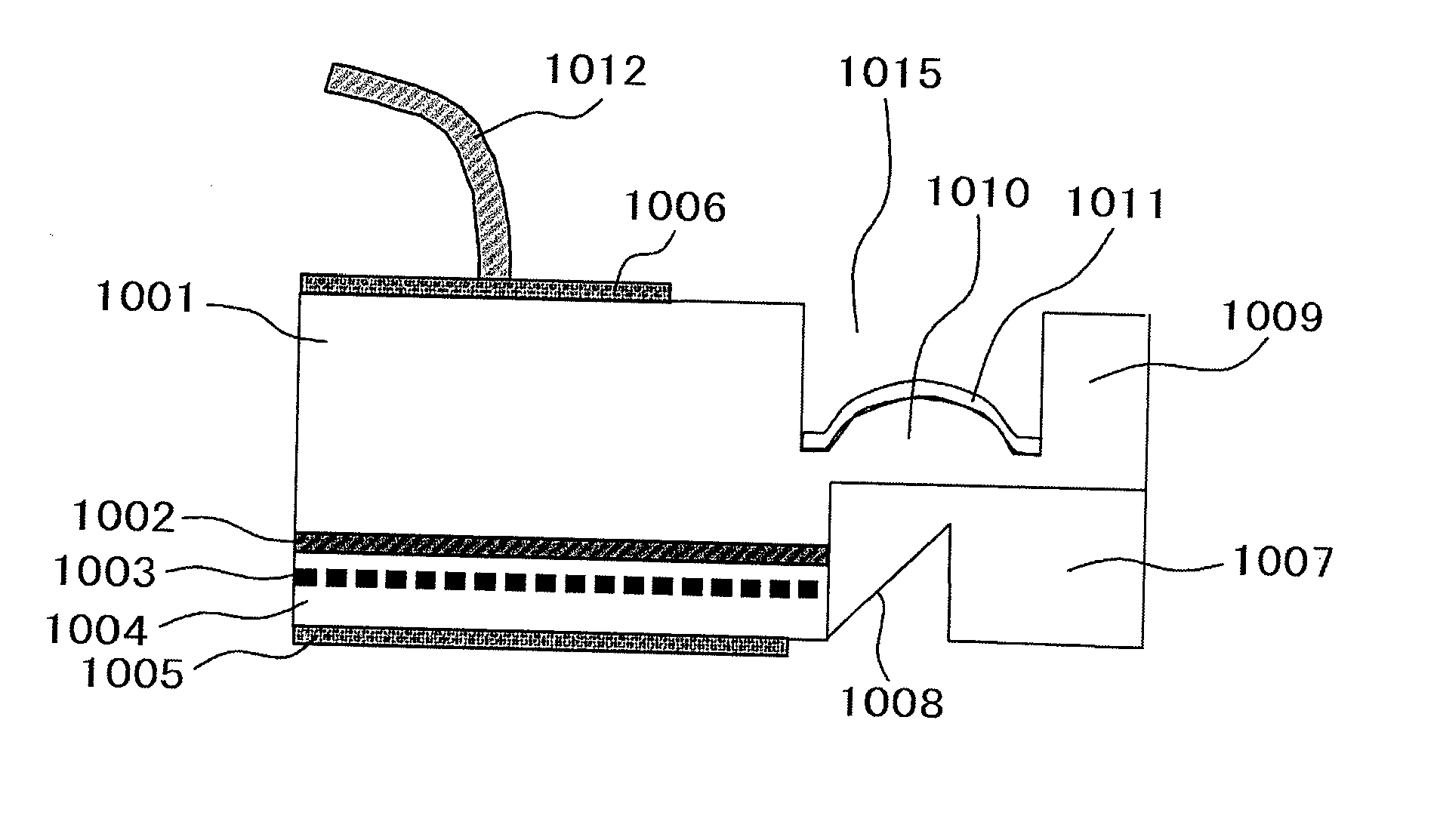Horizontal cavity surface emitting laser diodes, vertical illuminated photodiodes, and methods of their fabrication
a laser diode and cavity surface technology, applied in semiconductor lasers, instruments, optical elements, etc., can solve the problems of laser oscillation, degraded yield at both device fabrication and module assembly, and problems such as those described below, and achieve the effect of satisfying yield, reducing the number of devices, and enhancing the utilization efficiency per area
- Summary
- Abstract
- Description
- Claims
- Application Information
AI Technical Summary
Benefits of technology
Problems solved by technology
Method used
Image
Examples
first embodiment
[0052]A structure of a horizontal cavity surface emitting laser according to a first embodiment will be explained using FIGS. 2A and 2B, FIGS. 3A through 3F, and FIG. 4. The present embodiment is an example in which the present invention is applied to a 250-μm horizontal cavity surface emitting laser in which a device width (lens interval) is the same value as the pitch of a commercialized ribbon fiber. FIG. 2A is a birds-eye view of the surface of a laser device, and FIG. 2B is a light emitting surface of the laser device. Incidentally, although a chip from which a single channel element is cut out is illustrated in FIGS. 2A and 2B, an array structure is also possible. In the horizontal cavity surface emitting laser according to the present embodiment, an active layer 2001, a p-type semiconductor layer 2002, and a p-type contact layer 2004 are successively stacked and grown over an n-type InP substrate 2000. Further, although not illustrated in the drawing, a diffraction grating la...
second embodiment
[0073]The present embodiment is an example applied to a 1.3 μm-band InGaAlAs quantum well type horizontal cavity surface emitting laser having an RWG-type flip-chip mounted structure with a device width of 250 μm. FIG. 5A is a birds-eye view showing the surface of a laser device, and FIG. 5B is a light emitting surface of the laser device. In the horizontal cavity vertically emitting laser according to the present embodiment, an n-type semiconductor layer 4001, an active layer 4002, a p-type semiconductor layer 4003, and a contact layer 4004 are successively stacked and grown over an Fe-doped semi-insulating semiconductor substrate 4000. Further, although not shown in the drawing, a diffraction grating layer is formed directly on the active layer 4002. n-doped InP is used for the n-type semiconductor layer 4001, p-doped InP is used for the p-type semiconductor layer 4003, and a strained quantum well structure of InGaAlAs or the like, for example is used for the active layer 4002. Ga...
third embodiment
[0074]The present embodiment is a configuration example where an array-type lens integration horizontal cavity vertically emitting laser fabricated by applying the present invention thereto is applied to a small module.
[0075]FIG. 6A is a sectional view taken along a device optical-axis direction, of a module, and FIG. 6B shows a top view of the module. In the module according to the present embodiment, a multilayer wiring ceramic substrate 6002 is mounted over a package substrate 6001 having a strip line by gold bumps 6009. Further, an integrated circuit 6003 for driving the laser, and a 4-channel lens integration type horizontal cavity vertically emitting laser array 6004 having a flip-chip mounted structure fabricated by applying the present invention thereto are mounted over the multilayer wiring ceramic substrate 6002 while being electrically connected to each other by gold bumps. Further, a fiber array connector 6005 to which a lens array 6006 is mounted, is mounted above the l...
PUM
 Login to View More
Login to View More Abstract
Description
Claims
Application Information
 Login to View More
Login to View More - R&D
- Intellectual Property
- Life Sciences
- Materials
- Tech Scout
- Unparalleled Data Quality
- Higher Quality Content
- 60% Fewer Hallucinations
Browse by: Latest US Patents, China's latest patents, Technical Efficacy Thesaurus, Application Domain, Technology Topic, Popular Technical Reports.
© 2025 PatSnap. All rights reserved.Legal|Privacy policy|Modern Slavery Act Transparency Statement|Sitemap|About US| Contact US: help@patsnap.com



